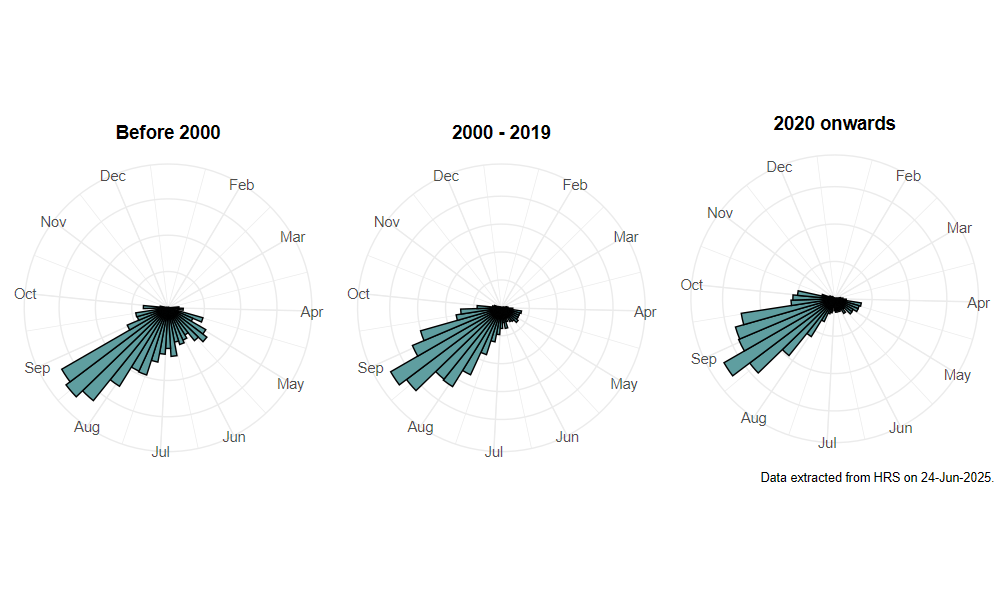Eupeodes latifasciatus (Macquart, 1829)
Identification
Identification difficulty = 3. ![]()
![]() according to Ball & Morris, 20241
according to Ball & Morris, 20241
Synonymy
Syrphus latifasciatus Macquart in Coe(1953)2, Metasyrphus latifasciatus (Macquart) in Stubbs & Falk (1983)3.
Biology
The larva has been found feeding on root aphids. In laboratory cultures it will feed on a wide range of aphids associated with low growing herbs and shrubs. Generally found in wetland situations, with a preference for wet meadows with Juncus or other lush vegetation. Adults visit a range of white and yellow flowers of low growing species, often in the vicinity of water.
Flight period
The following plots show the number of unique records per week excluding those reported to be of immature stages.

Distribution
Widely distributed but scarce, with the number of records varying greatly from year to year. This suggests that it may be a migrant, or at least boosted in abundance in some years by immigration. There is a heavier concentration of records south of the southern uplands of Scotland.

Trends
The following plots show the Frescalo TFactor vs year and a map of the rescaled frequency (all records) for the species.
-
Ball, S., & Morris, R. (2024). Hoverflies of Britain and Ireland. WILDGuides (3rd ed.). Oxford: Princeton University Press. ↩
-
Coe, R. (1953). Diptera: Syrphidae. Handbooks for the Identification of British Insects, 10(1), 1–98. ↩
-
Stubbs, A., & Falk, S. (1983). British Hoverflies: An Illustrated Identification Guide (1st ed.). Reading: BENHS. ↩